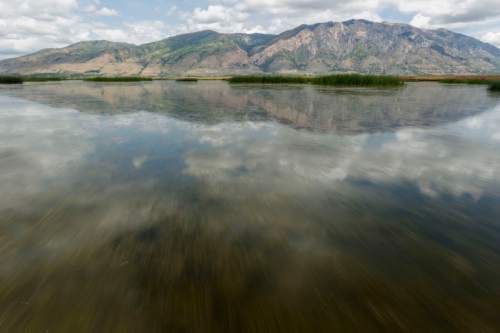This is an archived article that was published on sltrib.com in 2016, and information in the article may be outdated. It is provided only for personal research purposes and may not be reprinted.
"You need to listen to what the land is telling you."
— John Ferry
The land is not — at least, not always — telling us to dig it up, pave it over and otherwise treat it as a disposable commodity.
That's why John Ferry, a Box Elder County farmer and rancher, and his family have donated a conservation easement over a small but important sliver of their land along the Bear River to the U.S. Fish and Wildlife Service.
The 30-acre bit of wetlands, near an existing bird refuge, is the first step in an ambitious plan to preserve the natural beauty and utility of land that will never have a higher and better use than as a habitat for ducks and other wildlife.
Which means as part of an ecosystem that is as necessary to human life as it is to geese and muskrats. Systems that are all too likely to be laid waste by the otherwise irresistible economic pressure to turn both wildlands and farmland into housing developments, strip malls and highways.
A conservation easement is a device that allows designated pieces of land to remain either as wild or as producing farms and ranches without the private owners having to give up all the financial benefits of developing their property. The land remains in private hands, while the rights to develop the property are purchased by government agencies or by private conservation groups.
While the Ferry family was generous and far-sighted enough to donate the easement (please, nobody tell them how much money they left on the table), capturing the hoped-for 920,000 acres of private land will require funding.
Some of it will come from private sources, such as The Nature Conservancy, Trout Unlimited and the Trust for Public Land.
Some will come from the federal government, through the national Land and Water Conservation Fund. Utah Rep. Rob Bishop tried to kill that program, yet he still had the nerve to show up at the ceremony accepting the Ferry family gift.
Far too little will come from the state of Utah. Which is likely to come back to bite us after excessive development draws so much water from the Bear River that the Great Salt Lake and its ecosystem is destroyed.
The Legislature was wise enough to establish the LeRay McAllister Critical Land Conservation Fund back in 1999. It has leveraged $22 million in state funds to raise $150 million in federal and private funds, all used to save or restore 110,000 of sensitive lands around the state.
But the Legislature, always able to find millions of dollars for such snipe hunts as seizing federal lands and building coal ports in California, has been so parsimonious with the McAllister fund over the past few years that it is set to run out of money after this fiscal year.
The only result of that can be too little land set aside in the rapidly growing state, land that can't be reclaimed for natural uses once the bulldozers have had their way.



